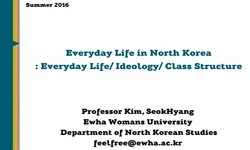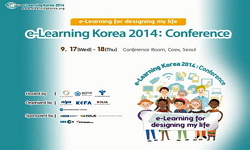목적: 한국과 일본의 당뇨망막병증 치료 경향을 알아보고자 하였다. 대상과 방법: 한국망막학회 회원 210명, 일본당뇨병안학회 회원 754명을 대상으로, 당뇨망막병증의 진단 및 치료에 관한 4...
http://chineseinput.net/에서 pinyin(병음)방식으로 중국어를 변환할 수 있습니다.
변환된 중국어를 복사하여 사용하시면 됩니다.
- 中文 을 입력하시려면 zhongwen을 입력하시고 space를누르시면됩니다.
- 北京 을 입력하시려면 beijing을 입력하시고 space를 누르시면 됩니다.


한국과 일본의 당뇨망막병증 치료에 대한 경향 비교 = Preferences and Trends in the Treatment of Diabetic Retinopathy in Korea and Japan
한글로보기https://www.riss.kr/link?id=A102124017
- 저자
- 발행기관
- 학술지명
- 권호사항
-
발행연도
2016
-
작성언어
-
- 주제어
-
KDC
510
-
등재정보
KCI등재,SCOPUS,ESCI
-
자료형태
학술저널
- 발행기관 URL
-
수록면
1248-1253(6쪽)
-
KCI 피인용횟수
0
- 제공처
- 소장기관
-
0
상세조회 -
0
다운로드
부가정보
국문 초록 (Abstract)
목적: 한국과 일본의 당뇨망막병증 치료 경향을 알아보고자 하였다.
대상과 방법: 한국망막학회 회원 210명, 일본당뇨병안학회 회원 754명을 대상으로, 당뇨망막병증의 진단 및 치료에 관한 49개 항목의 설문조사를 시행하였다. 설문조사는 2012년 6월-7월간 실시되었다.
결과: 한국망막학회 회원 210명 중 91명(43%), 일본당뇨병안학회 회원 754명 중 120명(16%)이 설문에 참여하였다. 확산 당뇨황반부종의 치료에 관하여, 한국에서는 ‘항혈관내피세포성장인자 안구내 주사 후 국소 레이저 광응고술’이 가장 선호되었던 반면(48%), 일본에서는 ‘테논낭하 스테로이드 주사 후 국소 레이저 광응고술’이 33%로 가장 선호되었다. 두 번째로 많은 응답을 받은 항목이 일본에서 유리체절제술이었던 것에 비해(18%), 한국에는 아무도 유리체절제술을 선호하지 않았다. 그러나 난치성의 확산 당뇨황반부종에 대해서는 한국에서도 유리체절제술을 하겠다는 응답이 75%로 나타났다. 일본에서는 항혈관내피세포성장인자나 스테로이드 안구내 주사를 병행하지 않는 유리체절제술이 상대적으로 더 높았다. 양국 모두에서 증식 당뇨망막병증의 수술에 23 Gauge (G)나 25 G를 이용한 소절개창 유리체절제술을 선호하였다(일본 64%, 한국 90%).
결론: 당뇨망막병증의 진단 및 수술 환경은 한일 양국이 비슷한 경향을 보였다. 하지만 당뇨황반부종의 치료 경향에서는 큰 차이를 보여, 한국에서는 항혈관내피세포성장인자를 적극적으로 사용하는 반면, 일본에서는 테논낭하 스테로이드 주사와 유리체절제술을 선호하였다.
다국어 초록 (Multilingual Abstract)
Purpose: To evaluate preferences and trends in the management of diabetic retinopathy in Korea and Japan. Methods: An Internet survey comprised of 49 questions was sent to the members of Korean Retina Society (KRS) and Japanese Society of Ophthalmic ...
Purpose: To evaluate preferences and trends in the management of diabetic retinopathy in Korea and Japan.
Methods: An Internet survey comprised of 49 questions was sent to the members of Korean Retina Society (KRS) and Japanese Society of Ophthalmic Diabetology (JSOD). The survey was conducted during the period between June 2012 and July 2012.
Results: Ninety-one of 210 members of the KRS (43%) and 120 of 754 members of the JSOD (16%) participated in the survey. For diffuse diabetic macular edema, ‘intravitreal injection of anti-vascular endothelial growth factor (anti-VEGF) followed by focal laser treatment’ was the most preferred treatment in Korea (48%), while ‘sub-tenon steroid injection followed by focal laser treatment’ was the most common procedure in Japan (33%). Vitrectomy was the second most common procedure in Japan (18%). In contrast, none of the KRS members preferred vitrectomy in this situation. For refractory diabetic macular edema, however, vitrectomy with or without the use of anti-VEGF was chosen in 75% of the KRS members. In Japan, vitrectomy without the use of intravitreal injection of anti-VEGF or steroid was relatively more preferred. Small-gauge (G) vitrectomy using either a 23 G or 25 G needle was popular in both countries (90% in Korea, 64% in Japan).
Conclusions: Although the trends in diagnostic and surgical environments were similar in Korea and Japan, the preferred treatment approaches for diabetic macular edema were different. Sub-tenon steroid injection and vitrectomy were preferred in Japan, while anti-VEGF injection was most commonly employed in Korea.
참고문헌 (Reference)
1 Boyer DS., "Three-year, randomized, sham-controlled trial of dexamethasone intravitreal implant in patients with diabetic macular edema" 121 : 1904-1914, 2014
2 Mitchell P., "The RESTORE study : ranibizumab monotherapy or combined with laser versus laser monotherapy for diabetic macular edema" 118 : 615-625, 2011
3 Do DV., "The DA VINCI Study : phase 2 primary results of VEGF Trap-Eye in patients with diabetic macular edema" 118 : 1819-1826, 2011
4 Nguyen QD., "Ranibizumab for diabetic macular edema : results from 2 phase III randomized trials : RISE and RIDE" 119 : 789-801, 2012
5 Yamada M., "Prevalence of visual impairment in the adult Japanese population by cause and severity and future projections" 17 : 50-57, 2010
6 윤경철, "Prevalence of Eye Diseases in South Korea: Data from the Korea National Health and Nutrition Examination Survey 2008-2009" 대한안과학회 25 (25): 421-433, 2011
7 Photocoagulation for diabetic macular edema., "Early Treatment Diabetic Retinopathy Study report number 1. Early Treatment Diabetic Retinopathy Study research group" 103 : 1796-1806, 1985
8 Arevalo JF., "Comparison of two doses of primary intravitreal bevacizumab(Avastin)for diffuse diabetic macular edema : results from the Pan-American Collaborative Retina Study Group(PACORES)at 12-month follow-up" 247 : 735-743, 2009
9 Writing Committee for the Diabetic Retinopathy Clinical Research Network., "Comparison of the modified Early Treatment Diabetic Retinopathy Study and mild macular grid laser photocoagulation strategies for diabetic macular edema" 125 : 469-480, 2007
10 Michaelides M., "A prospective randomized trial of intravitreal bevacizumab or laser therapy in the management of diabetic macular edema (BOLT study) 12-month data: report 2" 117 : 1078.e2-1086.e2, 2010
1 Boyer DS., "Three-year, randomized, sham-controlled trial of dexamethasone intravitreal implant in patients with diabetic macular edema" 121 : 1904-1914, 2014
2 Mitchell P., "The RESTORE study : ranibizumab monotherapy or combined with laser versus laser monotherapy for diabetic macular edema" 118 : 615-625, 2011
3 Do DV., "The DA VINCI Study : phase 2 primary results of VEGF Trap-Eye in patients with diabetic macular edema" 118 : 1819-1826, 2011
4 Nguyen QD., "Ranibizumab for diabetic macular edema : results from 2 phase III randomized trials : RISE and RIDE" 119 : 789-801, 2012
5 Yamada M., "Prevalence of visual impairment in the adult Japanese population by cause and severity and future projections" 17 : 50-57, 2010
6 윤경철, "Prevalence of Eye Diseases in South Korea: Data from the Korea National Health and Nutrition Examination Survey 2008-2009" 대한안과학회 25 (25): 421-433, 2011
7 Photocoagulation for diabetic macular edema., "Early Treatment Diabetic Retinopathy Study report number 1. Early Treatment Diabetic Retinopathy Study research group" 103 : 1796-1806, 1985
8 Arevalo JF., "Comparison of two doses of primary intravitreal bevacizumab(Avastin)for diffuse diabetic macular edema : results from the Pan-American Collaborative Retina Study Group(PACORES)at 12-month follow-up" 247 : 735-743, 2009
9 Writing Committee for the Diabetic Retinopathy Clinical Research Network., "Comparison of the modified Early Treatment Diabetic Retinopathy Study and mild macular grid laser photocoagulation strategies for diabetic macular edema" 125 : 469-480, 2007
10 Michaelides M., "A prospective randomized trial of intravitreal bevacizumab or laser therapy in the management of diabetic macular edema (BOLT study) 12-month data: report 2" 117 : 1078.e2-1086.e2, 2010
동일학술지(권/호) 다른 논문
-
단계적 하사근후전술에 따른 수술 후 안구 외회선의 변화
- 대한안과학회
- 이동훈(Dong Hun Lee)
- 2016
- KCI등재,SCOPUS,ESCI
-
소아에서 망막검영법과 자동굴절검사로 시행한 현성굴절검사와 조절마비굴절검사의 비교
- 대한안과학회
- 박아람(A Ram Park)
- 2016
- KCI등재,SCOPUS,ESCI
-
안구 둔상에 의한 안구합병증과 동반된 안와골절에 대한 분석
- 대한안과학회
- 임재완(Jae Wan Lim)
- 2016
- KCI등재,SCOPUS,ESCI
-
- 대한안과학회
- 강민재(Min Jae Kang)
- 2016
- KCI등재,SCOPUS,ESCI
분석정보
인용정보 인용지수 설명보기
학술지 이력
| 연월일 | 이력구분 | 이력상세 | 등재구분 |
|---|---|---|---|
| 2023 | 평가예정 | 해외DB학술지평가 신청대상 (해외등재 학술지 평가) | |
| 2020-01-01 | 평가 | 등재학술지 유지 (해외등재 학술지 평가) |  |
| 2017-01-01 | 평가 | 등재학술지 유지 (계속평가) |  |
| 2013-01-01 | 평가 | 등재 1차 FAIL (등재유지) |  |
| 2010-01-01 | 평가 | 등재학술지 유지 (등재유지) |  |
| 2007-01-01 | 평가 | 등재학술지 선정 (등재후보2차) |  |
| 2006-01-01 | 평가 | 등재후보 1차 PASS (등재후보1차) |  |
| 2005-01-01 | 평가 | 등재후보학술지 유지 (등재후보1차) |  |
| 2003-01-01 | 평가 | 등재후보학술지 선정 (신규평가) |  |
학술지 인용정보
| 기준연도 | WOS-KCI 통합IF(2년) | KCIF(2년) | KCIF(3년) |
|---|---|---|---|
| 2016 | 0.22 | 0.22 | 0.22 |
| KCIF(4년) | KCIF(5년) | 중심성지수(3년) | 즉시성지수 |
| 0.23 | 0.23 | 0.366 | 0.02 |





 KCI
KCI 스콜라
스콜라







